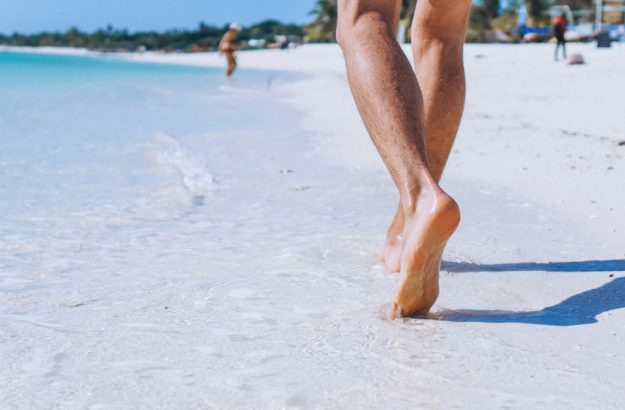
Prominent veins in your legs are not just a problem women face. Men also experience unsightly and painful vein conditions.
Some of these conditions can be superficial like spider veins or larger and more painful varicose veins.
So Why Do My Legs Look Like This?
Veins are blood vessels that return blood that has circulated the body back to your heart.
Venus insufficiency happens when there is an issue with the valves that carries the blood back up from your legs such as a blood clot or damage to a valve.
Venous insufficiency can present as a number of disorders such as spider veins, varicose veins and reticular veins.
Spider Veins
Telangiectasia, or spider veins are small superficial veins that are close to the surface of the skin.
They are connected to larger veins are not responsible for normal blood circulation.
The main causes for spider veins include pregnancy, weigh gain, professions that require a lot of standing and family history.
Varicose Veins
Varicose veins are large, contorted veins that are dark blue in color. They can look like bunched up cords and typically are not painful.
After prolonged standing or sitting these veins can cause the legs to feel achy or burning.
Reticular Veins
This type of vein is usually blue or purple and is flat to the skin. They commonly appear on thighs, lower legs, ankles, and even the face.
This vein condition causes pain and discomfort to the areas in which they appear. Reticular veins are knows as “feeder veins” that supply extra blood to spider veins.
How Do I Know If I Have Venous Insufficiency?
- Swelling
- Skin discoloration
- Puffy or prominent rope-like veins
- Ulcers in the skin
- Pain or throbbing in legs and feet
- Restless legs
- Cramps
- Leg weakness and fatigue
Who Is At Risk For Venous Insufficiency?
- Old age
- Previous blood clot
- Family history
- Obesity
- Muscle weakness
- Not being mobile
- Pregnancy
- Trauma
- Cancer
Can I Treat My Venous Insufficiency?
Depending on the underlying cause, there are many treatment options
Compression Stockings – these stockings put pressure on the lower legs and ankles and improve blood flow and take reduce swelling. A physician will determine which type of compression is appropriate.
Compression stockings alone will not eradicate the condition but they are used in conjunction to other treatments.
Sclerotherapy – a safe and effective treatment used on spider, varicose and reticular veins. The procedure is painless and typically takes multiple sessions, at least four weeks apart.
During the procedure a medication is injected into the veins and the vein is irritated. The irritated vein “sticks” together and is absorbed by the body.
Lasers can also be used as a treatment in addition to sclerotherapy on smaller veins such as on the face.
Endovenous Laser Therapy (EVLT) – this treatment is minimally invasive and treats the underlying cause of varicose veins. With an ultrasound, a this laser fiber is inserted through a small incision to the damaged vein. The laser heats and closes the vein as the fiber is pulled out.
The procedure takes about two hours and there is minimal down time – the patients are up and walking within minutes.
So How Can I Prevent Venous Insufficiency?
- Healthy weight and regular exercise
- Do not smoke
- Avoid standing or sitting in the same position for too long
